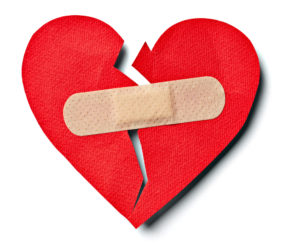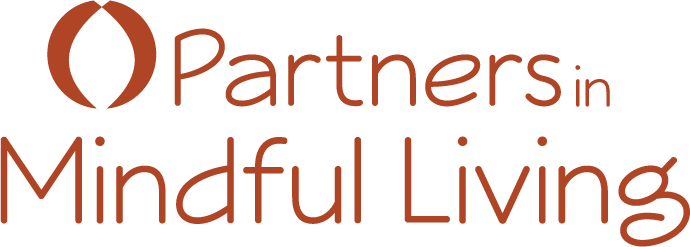
June 23, 2019
Getting things (and the hunt for them) can be exhilarating. Chasing the newest toy, fanciest car, biggest house, post gone viral, more followers and likes — all can generate a short-term feeling of excitement and even euphoria. Actualization of our desires can add sparkle and entertainment. However, that approach can also make us perpetually unhappy, unsatisfied, and ultimately, unmotivated. Why? Because there will always be another want. There will always be the killjoy whose toys are bigger and better than ours.
What happens when we invest tons of thought, energy, and effort into getting the thing or experiencing success? Almost immediately, we’re on to getting the next bigger thing, or an even greater success. It’s like the day after Christmas, after a huge buildup we feel sort of blah and deflated.
For most of us, unless we’re in jail or in a really bad situation, the life we have offers us myriad opportunities to feel exactly how we think getting the thing would make us feel. Happy with ourselves and with our lives. Read Radical Responsibility by Fleet Maull to see how even in prison your mind can find opportunities to create a feeling of satisfaction and a life well-lived.
Your brain is amazing! Just thinking about something in your past will allow you to replicate those past feelings in the here and now. Obviously, your wise choice becomes where to put your attention.
The next time you catch yourself thinking about what’s wrong, note what happens. Your brain will trigger the release of stress hormones and you will probably feel anxious and/or depressed. Notice how those thoughts create uncomfortable sensations in your body such as heavy chest, fluttery stomach, contracted, tight shoulders or jaw. Then think about the last time you felt loved or loving. Remember what was happening in detail, and then observe what occurs in your body. When you re-experience something in your mind, your body responds as if you are experiencing it now.
You decide where it makes sense to put your attention.
For instance, when I remember receiving a kindness from a friend, I’m aware that I feel content and loving. My body feels relaxed and warm. If an occasional not so satisfying interaction occurs with that friend, I try to remember that I can choose to dwell on it, creating tension and contraction in my body, or I can put my attention back on the many sweet interactions we’ve had.
When I think of the joy I get from my work and from writing, I feel a deep sense of gratitude that enlivens even the darkest, gloomiest day and moves me to think about what I might do with it so as not to waste it. This morning when I woke up, I was feeling glum about a house search that hasn’t been ideal up until now. After acknowledging the discouraged feelings, I started doing what makes me feel great, writing a Seedlings.
We strive for material things because of the feeling we think having them will give us. The point I’m hoping to make is that it’s not the things we want, it’s the feelings that we think the things will give us: happiness, confidence, fulfillment, pride, accomplishment.
Whether today is a good day or a really trying day, ground yourself in the here and now. Think back to the last time you had a feeling of contentment and satisfaction with your life. What was happening? Were you being of service? Sharing or doing something with a friend? Working or playing at something you love? Relaxing? Exercising your body? Gardening? Singing? Writing? Playing with your pet? Listening to music? Dancing?
What did you experience in your body? Explore how it made you feel. Discover how thinking about it is making you feel right now. That feeling is coming from inside you, not from something external. Where you put your attention will not only determine the quality of your day, it will determine the quality of your life.
Keep your attention on thinking about the experiences you’ve had that make you feel the most satisfaction and contentment. Take a few moments and write about those events. Create a running list of experiences that have given you feelings of fulfillment and gratification. When you’re struggling, it’s hard to remember what’s right in your life. This list of experiences will act as a gentle reminder that you can feel happy again and move in that direction sooner rather than later by thinking about, or engaging in, one of the experiences that has previously brought you joy.
Don’t stop going for things! Having material things and achieving successes can be fun and can make life exciting. However, these accomplishments will lose their glow if you aren’t able to notice and feel contentment in this moment without them.
In the last Seedlings I asked you to consider becoming still and focusing on your breath, bringing your attention back to your breath, over and over, for five minutes, twice a day. That one simple practice can help you begin to manage your mind by building your attention muscle. That’s what I’m talking about here. Putting your attention where it will give you the biggest return on your investment. Until you build that attention muscle, life is harder than it needs to be.
If you’ve already started the practice of stopping and allowing your attention to rest on your breath for five minutes, twice a day, keep it up! If you haven’t yet begun, I hope you will now. It’s never too early or too late.
Sometimes when we get better at managing where we put our attention, we end up with more of what we desire. Maybe that’s because the things we desire morph a bit. Or when we find that we are okay with what we already have, when we don’t believe we must attain more things to achieve a feeling of contentment, that is when more seems to grace us.
Much love,
Robyn
